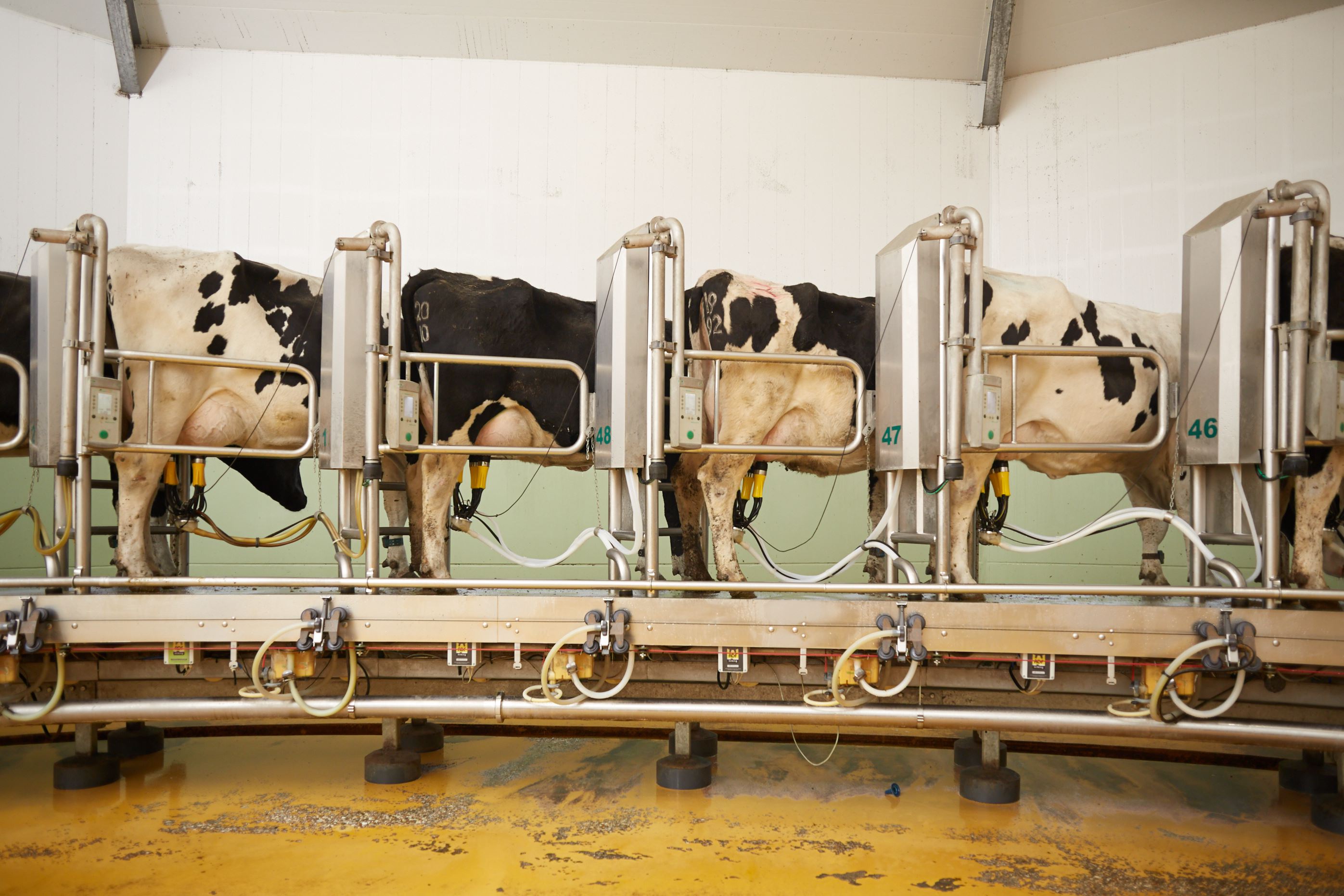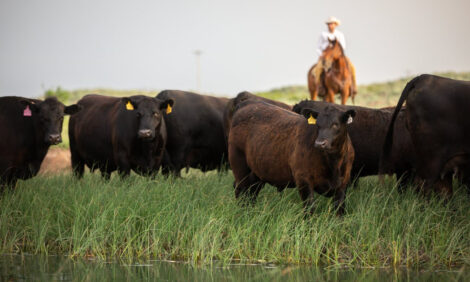



Weekly beef and dairy digest: Impact of US government takes action against COVID-19
Recent government actions in the US could have profound impacts on the dairy industry and China's agriculture sector begins to restructure.Weekly export figures for US beef
US beef net sales of 28,800 metric tonnes (MT) reported for 2021 saw increases primarily for Japan (9,100 MT, including decreases of 600 MT), South Korea (8,100 MT, including decreases of 400 MT), Mexico (3,800 MT, including decreases of 100 MT), China (3,300 MT), and Taiwan (1,300 MT, including decreases of 100 MT), were offset by reductions primarily for Kuwait (100 MT). Exports of 17,400 MT were primarily to South Korea (5,200 MT), Japan (4,900 MT), Mexico (1,900 MT), China (1,200 MT), and Hong Kong (1,100 MT).
An in-depth look at the US dairy industry
USDA dairy export analysis
Dairy exports on a milk-fat milk-equivalent basis totalled 643 million pounds in November, 63 million lower than October and 55 million lower than November 2019. On a skim-solids milk-equivalent basis, November exports totalled 3.670 billion pounds, 607 million lower than October but 1 million higher than November 2019. Exports of dry skim milk products were 137.1 million pounds in November, 32.2 million less than October.
Exports of whey products (dry whey, whey protein concentrate, modified whey, and milk albumin) totalled 187.1 million pounds in November, 15.6 million less than October. Dairy imports on a milk-fat basis totalled 472 million pounds in November, 56 million lower than October and 24 million pounds lower than November 2019. Notably, imports of butter were 4.0 million pounds in November, 2.7 million less than October.

Imports of anhydrous milk-fat and butteroil totalled 3.1 million pounds in November, 0.6 million less than October. On a skim-solids basis, November imports totalled 431 million pounds, 60 million higher than October but 53 million lower than November 2019.
Ending stocks on a milk-fat basis totalled 14.939 billion pounds at the end of November, 1.513 billion higher than November 2019. Butter ending stocks in November totalled 251.8 million pounds, up 71.2 million (39.4 percent) from November 2019. On a skim-solids basis, ending stocks totalled 10.240 billion pounds at the end of November, 113 million higher than November 2019. For the 3 months from September through November, domestic use on a milk-fat basis was 1.7 percent above the same 3 months of 2019. On a skim-solids basis, September through November domestic use was 1.3 percent higher than the same 3 months of 2019.
Recent US government actions affecting dairy markets
On 21 December the US Congress passed the Consolidated Appropriations Act (CAA) of 2021 (HR 133 of the 116th Congress), and the President signed it into law on 27 December. The CAA includes $900 billion for COVID-19 relief in the form of direct payments to households, jobless aid, support for small businesses, and many other financial stimulus measures. The relief provisions include about $13 billion specifically designated for the agricultural sector.
For the dairy industry specifically, the CAA includes supplemental Dairy Margin Coverage (DMC) payments based on the difference between each participant’s actual milk production in 2019 and the operation’s historical production base previously established through the program.
The CAA establishes a dairy donation program to provide $400 million to pay for milk to be processed into dairy products and donated to non-profit entities. Also, the Secretary of Agriculture is authorised to make recourse loans available to dairy processors, packagers, or merchandisers impacted by COVID-19. On 4 January USDA announced continuation of the Farmers to Families Food Box Program using additional funding from the CAA. Under this fifth round of the program, USDA will purchase an additional $1.5 billion worth of food for distribution to Americans in need. Contract awards are expected to be made by 19 January. Deliveries will begin shortly thereafter and will continue through the end of April. USDA will purchase combination boxes that include fresh produce, dairy products, fluid milk, meat products, and seafood products.

USDA outlook for feed prices
The 2020/21 corn price forecast is $4.20 per bushel, $0.20 higher than last month’s forecast. The 2020/21 forecast for soybean meal has been raised to $390 per short ton, $20 higher than the last estimate.
USDA’s Economic Research Service says the alfalfa hay price in November was $167 per short ton, $4 lower than October and $2 lower than November 2019. The 5-State weighted-average price for premium alfalfa hay in November was $200 per short ton, $6 higher than October but $9 lower than November 2019.
Updates on the global meat and dairy industries
Milk Production Outlook for major global dairy exporters
For 2020, combined milk production growth of the 5 largest world dairy exporters (Argentina, Australia, EU-28,2 New Zealand, and the United States) is estimated at 1.9 percent. For 2021, combined milk production of these exporters is expected to grow at a modest rate of 1.0 percent.
Milk production growth for the EU-28 is expected to slow from 1.5 percent in 2020 to 0.4 percent in 2021.
New Zealand milk production is expected to grow 0.9 percent in 2021; although there is currently dryness in the North Island, the projection assumes normal weather in 2021.
Australia milk production growth is projected to grow 3.3 percent in 2021 as favourable conditions of 2020 are expected to continue into next year.
In Argentina, milk production is projected to grow 1.8 percent in 2021 as efficiency gains from consolidation of the dairy industry will contribute to the growth.
Strong livestock feed demand in China
USDA reports that China’s feed demand will remain robust in MY2020/21 with continued swine restocking and livestock sector growth contributing to an overall feed demand increase of 15.6 million metric tonnes (MMT) from MY2019/20. Many industry contacts forecast a 23 million metric tonne (MMT) corn deficit in MY2020/21. To meet demand, the gap will be filled by reserve auctions, substitutions, and imports.
North and East feed mills are more active in rice and wheat auctions specifically targeting sales to feed mills, while Southern mills have easy access to imports of alternative grains. In general, top industry players see rice and wheat substitutes as the major feed trend for the next two years. This trend has been spreading from the North China Plain (NCP) to central China, and from solely in poultry feed to hog feed, as well.
China may be hiding a food scarcity
An ag industry analyst emails: “Talk among some traders and brokers is that China is experiencing a serious food shortage. China has been making bigger purchases of U.S. grains lately, as part of a previous trade agreement between the two largest economies in the world. Also, there are some reports that Covid-19 is making a resurgence in some locations in China. All of the above could impact China’s economic growth prospects. Of course, the China government’s secretive nature makes anything of this nature hard to confirm, but it bears keeping a closer eye upon.”

China eyes plant-based meat alternatives
While China remains the world’s leading consumer of meat and poultry, demand for plant-based meat alternatives is on the rise. With plant-based meat alternatives currently meeting or exceeding the cost of similar meat and poultry portions, leading plant-based meat alternative companies are focused on products that are alternatives for beef and pork, which tend to command a higher market price. Along with the relatively high price of plant-based meat alternatives, the main challenges facing the sector are taste, labelling, and consumer awareness, understanding, and acceptance.
Read further analysis of the global swine industry on The Pig Site and see Jim Wyckoff's outlook on the poultry industry on The Poultry Site.
TheCattleSite News Desk
IMPORTANT NOTE: I am not a futures broker and do not manage any trading accounts other than my own personal account. It is my goal to point out to you potential trading opportunities. However, it is up to you to: (1) decide when and if you want to initiate any traders and (2) determine the size of any trades you may initiate. Any trades I discuss are hypothetical in nature.
Here is what the Commodity Futures Trading Commission (CFTC) has said about futures trading (and I agree 100%): 1. Trading commodity futures and options is not for everyone. IT IS A VOLATILE, COMPLEX AND RISKY BUSINESS. Before you invest any money in futures or options contracts, you should consider your financial experience, goals and financial resources, and know how much you can afford to lose above and beyond your initial payment to a broker. You should understand commodity futures and options contracts and your obligations in entering into those contracts. You should understand your exposure to risk and other aspects of trading by thoroughly reviewing the risk disclosure documents your broker is required to give you.




